Of course when I speak of "fat" tyrannosaurus or other theropods I am not implying that they are fat the way a super weaner elephant seal pup is. Obviously they probably carried some fat depending on the season and condition but this fat would be concentrated at the base of the tail, thigh, abdomen and hip near the center of gravity (kind of like a chicken). When I speak of "fat" T. rex & tyrannosaurids I mean that they are coming at you with the thickness. A professional football linebacker or a sumo wrestler are both athletes, are both powerful in any sense of the word, are both athletically gifted in any sense of the word, and they both are carrying not a little, but a lot of fat. But these "girthy" athletes are probably in better shape than the average reader of this blog and one would hesitate to call them "fat" in the negative connotation of the word if they were within arms reach of you. It is a bit paradoxical that such large athletes are rarely described as "athletic" even though they perform amazing feats of power and strength. The term "athletic" seems to be reserved for only the svelte, lithe, trim, and quick athletes in the pantheon of "attractive" olympic body worship culture.
 |
| pro-baseball player Prince Fielder |
It is this bias I speak of - "what constitutes athletic?" - and how this concept intertwines with being slim, of low body fat percentage, and being of a culturally established level of physical beauty and attractiveness. It is this bias, I assert, that creeps into and underpins our thought processes when imagining what constitutes athletic and attractive creatures of deep time and how they should look.
 |
| olympic athlete Holley Mangold |
 |
| Gorgeous George and some dumb duckbill. credit Archive of Field Museum |
Above is the old - and now overhauled - predatory pose of Daspletosaurus dubbed affectionately "Gorgeous George" over some dumb duckbill at the Field Museum of Chicago (special kudos to DinoGuy2 from the dinotoyblog forum for jotting my memory of it). Although I never saw it in person I do remember this image vividly from my childhood. What I want to talk about is not the outdated vertical mount, or the tail dragging, or the pronated hands, or the dubious taxonomic status of this specimen. Go read this excellent write up The Glorious Journey of Gorgeous George if you want to learn more about the history of this mount. What I want to draw attention to is the gastralia in this mount that denotes a very thick and round countenance.
Gastralia are rarely included in mounts, even to this day, and I can't overstate the caveat that skeletal mounts sometimes get it wrong. On the other hand can anyone prove to me that the gastralia as depicted here did indeed get it wrong? As noted in the linked history of this mount the gastralia is not of the original bone. But it looks to be a pretty seemless transition of the gastralia from the pubic bone to the furcula. Based on articulated specimens of other theropods with intact gastralia this should be what to expect.
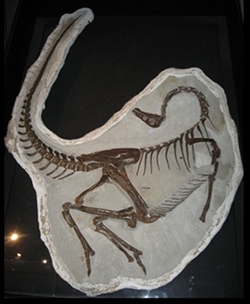 |
| stolen form some creationist web page |
 |
| Did you lose some weight Gorgeous George? credit Funk Monk CC2.0 |
It appears that Gorgeous George in his new dynamic posture has received a bit of a tummy tuck. Where did this tummy tuck come from?
Well if you go back and read Predatory Dinosaurs of the World Gregory S. Paul advocated hollowed out bellies for theropods:
"...theropods probably looked lean, sleek, and a little bony, like big dogs and cats. "Plump" theropod drawings are certainly wrong." (Pp. 105)
"Predators gorge at a carcass, then fast until they are hungry again. The stomach is highly distensible so it can hold big meals. In accordance with this the abdominal "ribs" or more correctly gastralia, of predatory dinosaurs were poorly ossifiied, multijointed, and very flexible. So hungry theropods on the hunt should be drawn with hollow cat- or dog-like bellies. In some of the big mounted skeletons, the abdominal ribs are mounted to form a distended belly, which would be true only after feeding on a kill. A satiated theropod mush have waddled away from its meal!" (pp. 106)
His skeletals follow suit. Go peruse his theropod skeletals, especially of any large bodied forms, and you will note he gives a distinctive tummy tuck to the gastralia just after the pubic bone.* But is there any evidence for such a tummy tuck in theropods? Would the gastralia of a hungry theropod necessarily have formed such a hollow cavity or would a theropod belt - line been a bit more ample? I have not found any preserved specimens and I welcome any evidence supporting such a tummy tuck. Crocs don't seem to have it. I can't discern such a tuck in any of the remarkably complete specimens of theropods... you can connect the dots or the gastralia as you want BUT there might just be a bit of a modern day bias in trimming up theropod skeletals/mounts in some cases. Perhaps the ol' skool look had a little bit more truthiness to it than we might initially presume... I have not noticed the tummy tuck in Scott Hartman's skeletals but I do think his flesh outlines are too svelte.
*I am not suggesting that GSP ignored or misinterpreted data merely that his depiction of tummy tucked gastralia is consistent with his assertion of hollow bellied, svelte theropods.
Things seem a little equivocal on the exact neutral placement of gastralia but there is some work done go here. Instead of gastralia allowing a "tummy tuck" look as GSP asserts Classens advocates a more concave look for theropod gastralia:
"In ornithomimids preserved in situ the ventral outline of the abdominal wall as indicated by the gastralia is usually concave. Although this may be a taphonomic artifact, midventral shortening of the gastralial system would result in ventral movement of the abdominal wall (fig 16 A-C below). The ventral movement of the body wall during protraction would result in an increase in trunk volume"
 |
| (from Classens 2005) |
| Chubster Tyrannosaurus from David Norman's Dinosaur! non tummy-tuck |
 |
| Svelte Tummy Tuck Tyrannosaurus credit Gregory S. Paul used for educational purposes "don't sue me please" |
As you can see adding the tummy tuck has a profound effect on how the rest of the gastralia line up, dramatically altering the profile of the animal. Classens cites a paper by Carrier & Fisher that during gastralial retraction the abdominal cavity could expand 14% in Allosaurus !!
 |
| non-tummy tuck T. rex postcard from London Natural History Museum taken from Don Glut |
 |
| credit Neil Lloyd taken from Love in the Time of Chasmosaurus |
Obviously the above image has some glaring issues - but maybe the rotund girthiness offers a lot more truthiness in it than we might be comfortable in conceding?
Where does the truth lie with regards to gastralia placement? Maybe a bit in between the Gorgeous George look and the GSP tummy tuck look? Or is that just a needless compromise? Personally I suspect past "chubster" depictions might offer a shade more truth than the more recent svelte, trim depictions. Perhaps we prefer our theropods svelte, trim, and "athletic" looking just like we prefer our modern day "athletes" to look with respect to olympic body spartan hero kult skinny worship?
Think about balance for a second. Having the most rounded, heavy part of your body towards the center of gravity makes absolute sense for a horizontal obligate biped, especially one with a big head. Functionally theropods would be more stable in that configuration.
Did I just make all theropods - not just tyrannosaurids - "fatter" or phatter if you prefer? Yeah I said it, every svelte looking, skinny, tummy tucked theropod is OBSOLETE!! ;')
 |
| CutiePie by Duane Nash |
Weird enough for you?
Whiskers, of course it had whiskers. A big fat tail base because of the caudemofemoralis and fat storage, of course. Prominent pterygoideus flare just like in big crocs - why not for the strongest terrestrial biter ever? Obscene tufts of thickened skin around the head, neck, and forequarters - biting into the neck of T. rex would be like biting into a flat big rig truck tire. But probably the first thing that catches your eye is dem big honking toes and feet, enough to give any pedicurist nightmares...
Because the feet of Tyrannosaurus and other - quite literally - mega-avepods have to react to the stresses incurred by high weights we should think about the ol' square cube law. Since volume increases faster than surface area large theropods should have relatively bigger, derpier, and more rotund toe and foot pads than their smaller brethren. Trackways confirm this.
 |
| Credit Rufous-Crowned Sparrow. Philmount Ranch new Mexico |
In situ tyrannosaurid Bellatoripes fredlundi Trackway A images. a) Print #2 of Trackway A (in situ) - PRPRC 2011.11.001 (right); b) Trackway A (in situ) view to the east of prints #1–3. Note the thick layer of kaolinite in the freshly excavated area in front of print #3.
Also of note is the reported gigantic abelisaur footprint of recent news that features a positively gigantic foot pad. I have heard some chatter it might be from a sauropod back foot but when giant biped get their foot on it just may have looked like that...
Not only are giant theropod feet bigger, wider, and more plump than generally depicted, the claw itself was likely fairly elevated off the substrate in neutral position with only the tip contacting the ground and perhaps only when it pushed off. Think more like giant dog paws. YW Lee was kind enough to share this purported photo displaying massive toe pads on the feet of Concavenator. I honestly don't know if I am breaking some embargo here or if this should be taken down (let me know if so), but sheesh that padding is incredible.
Anyways make of these pics what you will, perhaps I severely underestimated the amount of toe padding in my illustration?!?
In any case there are good examples from present theropods that have toe pads to suggest that as bipedal terrestrial theropods get bigger the padding on their feet get relatively bigger to compensate for the exponential expansion of volume (i.e. weight).
Compare the foot padding on a turkey to an ostrich:
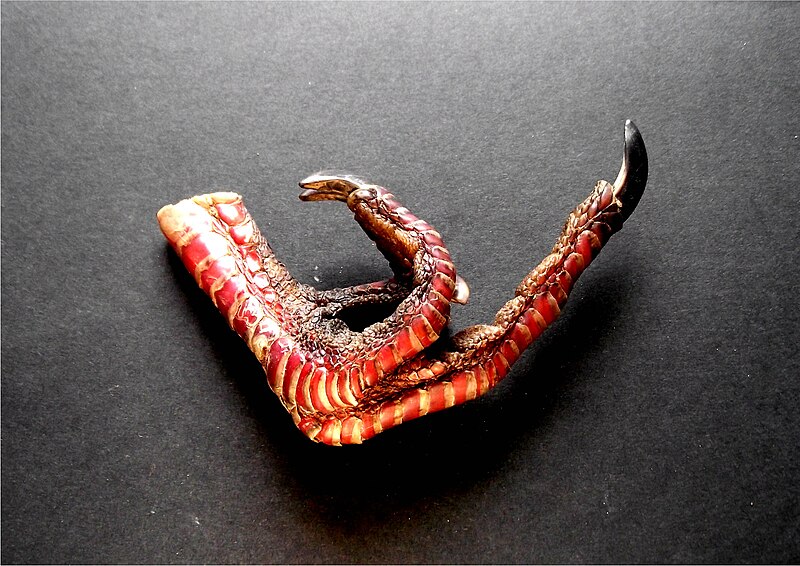 |
| credit Malcolm Libury. turkey foot |
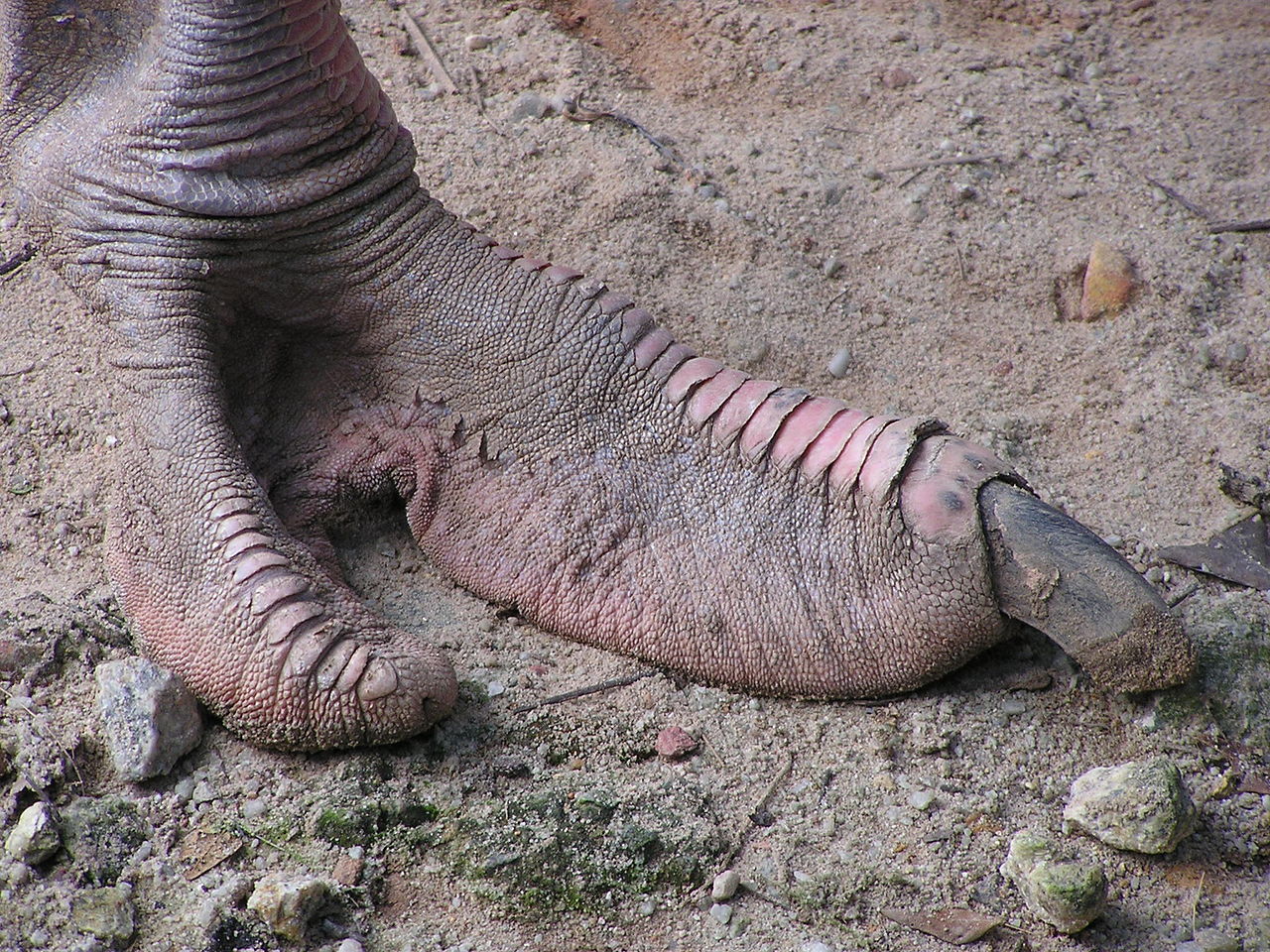 |
| credit Masteraah. CC2.0 |
For paleoartists wanting to draw large theropod feet with a bit more truthiness: draw them bigger, plumper, more elevated claws, more uglier, and just plain derpier than you see in all other depictions (including any and all "world renowned" professional paleoartists). It is quite interesting why big ol' toes and toe pads have not got a "footing" so to speak (bad pun is always intended) in theropod paleoart. I have discussed the patently obvious issue of ignoring abundant large toe pads in dromaeosaurids before - which calls into question a tight grasp needed for the RPR model of dromaeosaur predation. We have had evidence suggesting as such for some time via these footprints. But in my estimation only a paltry foot pad is given and never do you see the claws actually raised off of the ground.
Big, gnarly, ugly toes and feet are simply not as attractive and sexy as the slender, refined, and petite toes and feet of modern theropod paleoart. We keep wanting to export our cultural baggage with us in our excursions into deep time.
So back to stalking technique and what big foot pads, chubby toes, and gel shoes meant for T. rex and other large theropods. What these attributes imply is that one of the most iconic scenes from Jurassic Park - the cup of water rippling at the approach of T. rex - is truly and utterly false. Not only that, such a noisy approach is diametrically opposed to the stealth mode that these animals operated in.
T. rex and other giant avepods would have been disarmingly quiet when walking around. Their huge and fleshy toes and foot pads smothering and muffling the sound of any snapping vegetation or substrate that might betray their presence. In heightened stealth mode - when they were actually stalking - they would have moved with the precision and care of a gigantic heron. Students of natural history should immediately think of the commonly observed silence that elephants can move with. An uncanny ability to slip into stealth mode is often attributed to these animals by hunters/poachers/naturalists as they can at will slip into the brush and disappear noiselessly.
Elephants are also useful in providing an example of unequivocally gigantic, stealthy, and strategic (plant) predators that make successful and repeated nocturnal raids on the subsistence farms of hyper vigilant but nocturnally ill - equipped hominins.
When T. rex and other tyrannosaurids were not out performing stealth raid operations at night what were they doing during the day? Probably a lot of lounging around on their big fat bellies, preferably in a morass of cooling mud or body of water like the self satisfied tyrants they were. Probably looking quite ridiculous while doing so. And yes they could lie down just as I depicted below. (Pp 199 Ch. 11 Rex, Sit: Digital Modeling of Tyrannosaurus Rex at Rest Stevens, Larson, Will & Anderson Tyrannosaurus Rex: The Tyrant King).
Cuz bad asses do what they wanna do and they don't care what you think about 'em or how ridiculous they look doing it.
Cheers!!
 |
| From Amlaner & Ball 1983. encountered here |
Sources
The Glorious Journey of Gorgeous George. Extinct Monsters
Classens, Leon P.A.M. (2004) Dinosaur Gastralia: Origin, Morphology, and Function. Journal of Vertebrate Paleontology 24(1) 89-106: March 2004 online
Paul, Gregory S. Predatory Dinosaurs of the World. 1988 New York Academy of Sciences. Sime & Shuster
"A Long habit of not thinking a thing wrong, gives it a superficial appearance of being right, and raises at first a formidable outcry in defense of custom". Thomas Paine
Support me on Patreon.
Like antediluvian salad on facebook. Visit my other blog southlandbeaver.blogspot
Watch me on Deviantart @NashD1. Subscribe to my youtube channel Duane Nash.



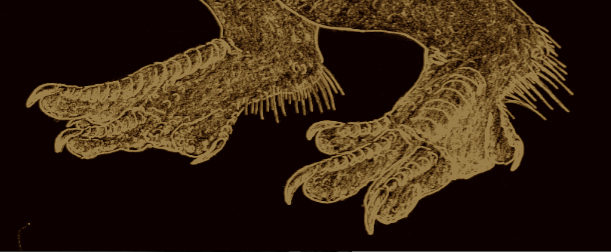
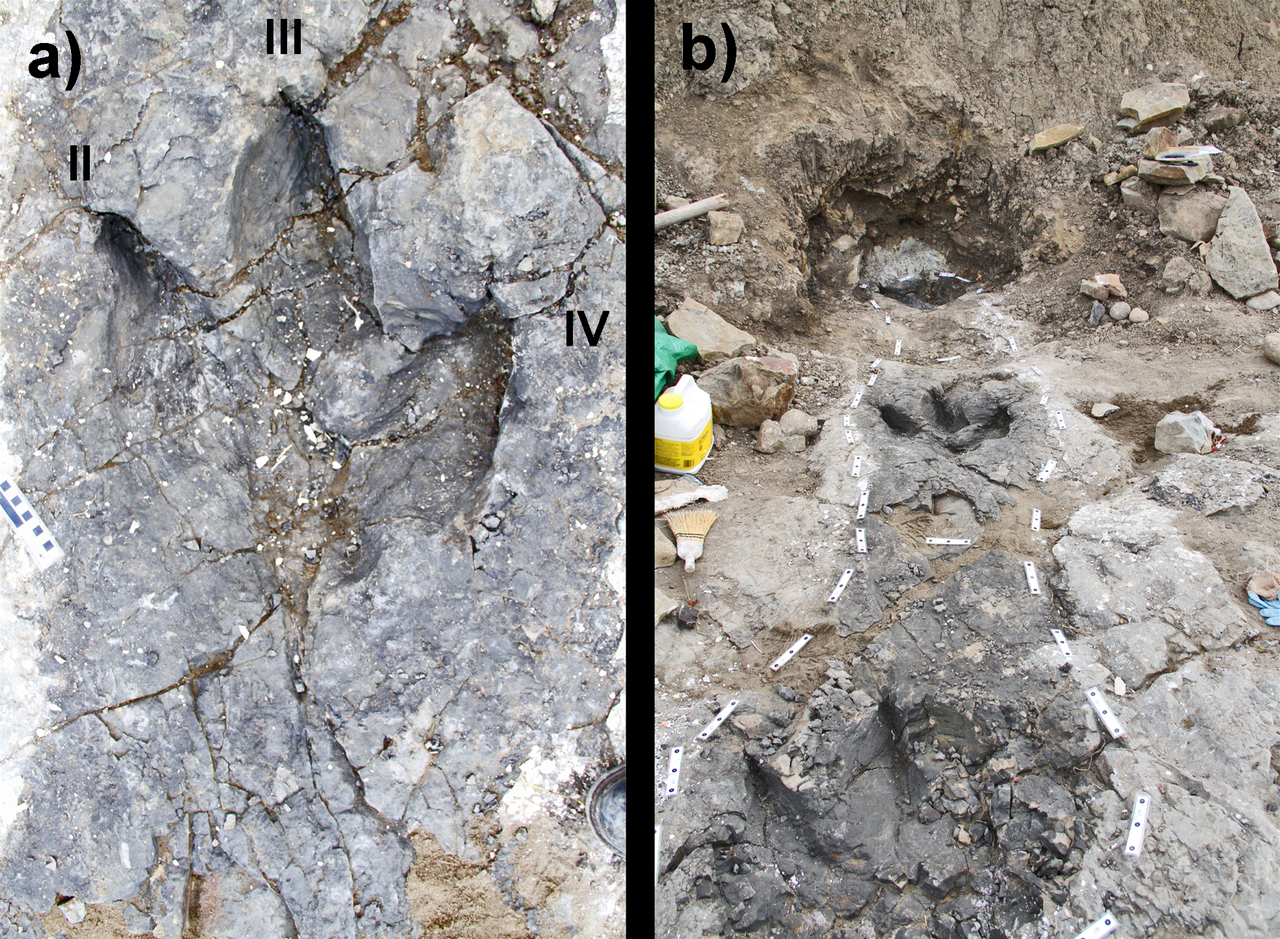







20 comments:
great post!
does the rex that's lying down have external mammal-like ears?
Thanks. No, the scanning didn't come out so great. Just ear slits with little tufts of feathers to line it.
Is it just me or does the ratite-like, heavily padded theropod foot seem to be a great kicking weapon?
Probably, but then again any part of something as big ol' sexy rexy that hit you is gonna pack a punch.
I could see some limited kicking potential http://sites.psu.edu/sounder/wp-content/uploads/sites/5643/2013/10/tyrannosaurus-sex-neck-biting.jpg
I think the tail would be a more likely weapon, just quickly turning their body to smash into a rival and possibly to trip them over
That padded foot is reminding me eerily of a cassowary....
I think that might explain why dromaeosaurs had sickle claws: They would run up, leap and kick with talons outstretched, and once the claws are in the animal can bend over and finish its prey with tis teeth.
Great post! I feel like I was the only one wondering about these two things. After looking at at a pictures of alligators, bulls, buffalo, and other animals I started seeing that you couldn't see the hips from the front, and started wondering if dinosaurs had that too. I also saw the T. rex trackways to saw just how big the feet could have looked, imagining a T. rex with feet like a dong-tao chicken. There is one more thing though. The backs. If you look at a humans back, you can see the line going down the middle of the spinalis area. You can see also it on large snakes, like anacondas, and large monitor lizards. You can actually see it on a bunch of animals, mostly reptiles from what I've seen. I never really see this in paleo art, it's always just the spine. Anyway, If you look on the muscle mass of the cross section of the tail on something like carnotaurus (https://upload.wikimedia.org/wikipedia/commons/c/ca/Carnotaurus_tail_cross_section.png), it looks like it had this. But I still keep seeing people put the spine showing.
Still cautious about your writing style but that's a very subjective thing. I don't think you put an end to all other Tyrannosaurus reconstructions and that we still lack a lot of knowledge to be certain of those aspects of rex's biology, appearence and behaviour. However, as always you put the finger on very interesting and unexplored fields. Night stalking and fat but quiet feet are indeed not far-fetched. I think your art style deserves to be a tad bit rigorous, so you can better serve your concepts (many aspects are close to innacurate like the skull, hand motion, etc. But they do the most improtant thing; giving a mental representation of your hypothesis in general. To conclude, still not a fan of your writing but excellent fields of reflexion and good ideas.
@mrpicole Thanks!! interesting idea about the concave muscle outline on the back, I will look at that.
@William Bailiey. Indeed. Thanks for commenting!!
Re: kicking, by the time tubby Rexy got in a good position to kick (including the motion of lifting its leg up) it would've had time to deliver a bite, a headbutt, or a tail-whack. I think Rex would've mostly kicked their victims when they were already down, allowing more time to line up a proper curb stomp.
Dude, I love your notions on the bulk of these theropods It has definitely been an inspiration on my own work. I have started to notice how thin we make our big theropods as well. It is especially apparent when you start to sculpt dinosaurs in 3D. You begin to realize the bulk is way to light to even hold up the animal in life. Those poor atrophied leg muscles are always depicted too thin. With regards to the feet, I recently did a sculpt of a Deinonychus, and Anzu,and included pretty big foot pads on them. I probably could have gone crazier on the Anzu. It was great when afterward I then saw your post about the dromeosaur foot. It was nice to see someone else doing that. I have been looking to Cassowaries, and Emus for my feet. They have pretty big foot-pads going on. I am working on a sculpt of Giganotosaurus and I was looking at the tail base and how we often depict a weird concavity between the ischium and tail. If you look at most reptiles tails, there is no concavity at the tail base. On my sculpt I attempted to fill that in a bit and it looks pretty cool. In any case, I love your posts.Great job! Keep em coming, this is my favorite paleo blog. Both entertaining and thought provoking.
I was thinking more in lines of theropods in geenral (since things like dromaeosaurs also and toe pads and a ratite-like foot structure)
@Duane Nash I forgot to mention you can also see this on modern day dinosaurs, just look at a chicken or turkey in the meat section in a grocery store.
@Nick Fonseca. Thanks for the kind words, I'm glad you get something out of it. A lot of the stuff I talk about is known to a degree - and often in the "technical" literature - but for whatever reasons not efficiently translated or accepted by paleoartists. Giant theropods imo would have been awe-inspiring kaiju like battleship cruisers. Another thing to think about is adding more cartilage at the ankle. Probably very knobly-wobbly looking like the ankles of rhinos and ostriches, much more gristle than pretty much always depicted.
@mepicole. Thanks I will look for it!! The meat section - especially in Asian markets - is a great place for impromptu anatomy lessons!!
When I worked at the zoo the rheas would sometimes lay flat like that.
Haven't commented here in a while , though that's mostly because i've had nothing of value to share,i've followed each and every post from full lipped saber toothed kitties up till pot belly rex i assure you !
Reading through this post has made me realize how, in spite of their differences, , T Rex and Spinosaurus are pretty much expys of one another, both are charismatic and controversial megatheropods who have held the "biggest theropod "title and have generated heated debates over their lifestyles (Hunter /Scavenger, Pursuit Hunter/Ambush for Rex , Bipedal/Quadrupedal stance, Aquatic/Terrestrial hunter for Spino) both are the largest known members of their respective families and are somewhat of an anomaly within the families themselves (much more obvious in Spino's case, but if you take a detailed look at ol Rexy you'll see that he really stands out among his kin) both are noted for their skull morphology(Rexy's faamous bone crusher jaws and Spino's narrow snout), both possess a barrel like torso and likely had a thick robust appearence in real life, both wield somewhat reduced limbs (Rexy's arems and Spino's hind legs) which are often ridiculed for their perceived ineffectiveness but which in reality served the animals really well in what they did and both , while highly competent predators in their own right, are often hyped by their fans to monstrous levels of badassery (Trex, the true King of the Dinosaurs and Spinozilla).
Heh heh , again nothing of much value to share, just a little observation i picked up.
Great points Robert... another observation I would add is that they are both simultaneously scientific and cultural creations. The line is not as clear cut as one might imagine and cultural notions bleed into scientific ones and vice versa.
More similarities:
- both have large deep-rooted conical dentition poorly suited to cutting.
- both got killed off by a mass extinction (Rex due to L-T and Spino due to Cretac is thermal Maximum
I believe that liposuction is an integral part of the tummy tuck procedure. It is helpful in thinning and contouring the abdomen, flanks, hips, and waist area to allow complete and uniform rejuvenation of the mid-drift area. With regards to choosing a surgeon I would recommend finding a plastic surgeon that has a passion for body contouring and the tummy tuck procedure.
tummy tuck before and after video gallery
^Haha the above is an above average troll or just some really ironic spam. I will leave it up for the LOLZy factors.
Post a Comment